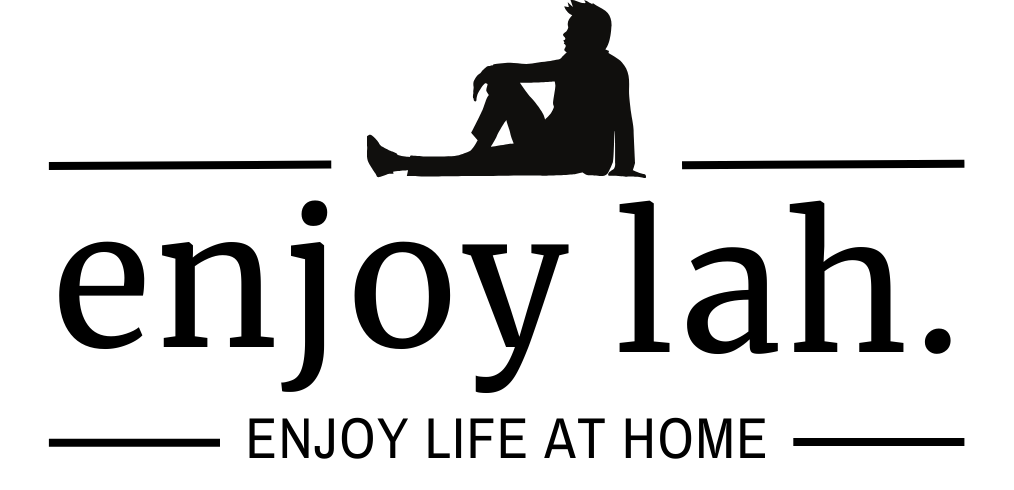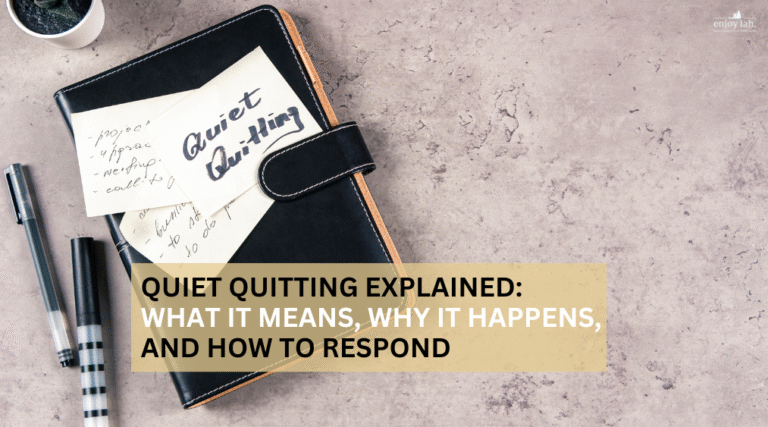When you get laid off, it does feel helpless at that instance, and feel as if the world is against you. I’ve been through it, and hence decided to put together a layoff survival guide to share some of the experiences that I went through.
Working in here in Singapore, the economy is an open one and hence, it’s always susceptible to global headwinds and technology disruption. In my opinion, unless you are in essential services or stable sectors, like healthcare, or the teaching profession, you need to prepare for career disruption. After going through a few layoffs personally, I no longer think my career is safe from disruption.
For instance, I studied a design major and was full of aspiration to be a designer. I was fortunate enough to secure design jobs with the MNCs designing consumer products. However, the inevitably happened when Apple launched its iPhone in 2008. I knew then that the product we are designing may not be competitive enough.
True enough, I was laid off, and the companies that I used to work, either relocated or the division was shut down. Moreover, during that period, there was a shift toward the relocation of the type of MNCs that I can work for, away from Singapore. The industry I used to work in was undergoing “restructuring”.
That was the time when I started to think, and made the decision that changed my career options.
Hence, this is the intent of this discussion: to share my layoff survival guide, my experiences, and include my views on how to build that resilience needed for the economy.
Take a Breath Before the Hustle — Rest Isn’t Laziness
When the layoff happens, the feeling is really down bad. It’s natural that you will feel depressed. My advice is to refrain from making decisions that are emotionally driven. Because it does not help things.
I feel the best is to take time to rest. At least let your emotion simmers down, clear your mind before you decide what’s the next step to take. Ensure you communicate well with your family to alleviate their anxiety.
If you can afford it, permit yourself to pause for 1–2 months. If not, at least take a couple of weeks break.
- Use this time to journal, walk, and reflect. Clear the mental fog.
- Talk to friends — unloading emotionally helps lift shame and stress.
- Go to the GYM or Outdoor Cycling – To do some workout
- Consider a short travel break. It’s not a luxury; it’s a strategy to reset your perspective.
➡️ Remember, taking a break is not wasting time — you’re giving yourself space to choose your next move with clarity. People who is more emotionally charged will need this.
Layoff Survival Guide $ – Set Your Financial Groundwork

When a layoff happens, the most important step in the layoff survival guide is reviewing and securing your finances:
- Review your retrenchment benefits: severance, leave encashment, and CPF status.
- Apply for short-term support if you are eligible.
- Adjust your spending habits with a 3–6 month survival budget.
Also:
- Good to reassess insurance or medical coverage (e.g., hospitalisation, life).
- Understand CPF contribution pauses — plan accordingly.
Depending on your contract, some may serve out gardening leave while some may leave immediately. If you are open, you can probably try the gig economy to earn some pocket money for expenses.
Of course, for those on gardening leave, please ensure if you are on gig hustling, do it with permission from the company. This is to ensure you will receive your severance package securely.
Layoff Survival Guide Mission Critical – Where Do You Stand in the Job Market?
The most critical step in the layoff survival guide is to assess your employability. This assessment will drive your decision forward, for the short term and long term. It will require some digging and research to understand the industry and where that kind of job trend is heading.

Before applying for jobs blindly, take stock:
- Are your skills in demand?
- What roles are growing in your industry?
- What roles are adjacent or transferable?
In assessing, you have to be honest about yourself. That is the only way to understand and identify the skill gaps that you need. Always validate with mentors or industry veterans if possible, so that this ensures a good understanding of the future job demand.
Three career paths to explore:
- Extension Path – Stay in your field with minor upskilling.
- Repurpose Path – Use your core skills in a new domain.
- Reinvention Path – Start fresh with new skills and mindset.
💡 Tip: Attend trade shows or industry expos — they give valuable insight into market trends and evolving roles.
My Case Study: How I Chose and Changed My Career Path
For instance, in my case, I was a designer who used a 3D Design and Modelling skill set to design my product. At that point, I deemed that it was going to be difficult to stay in the consumer electronics space as a designer and felt that the space was shrinking. Hence, I ruled out the extension path option.
People, however, did ask why I didn’t just go into Equipment design? That is possible. It’s complicated to explain here, and I will leave it to another session. After all, my passion was also in consumer product design then!
I opted instead to leverage my 3D Design skill set to go into application trade, where I repurposed my skill set and design experience towards helping to sell 3D design software to other industries instead. That still works for me till now (16 years! Till now). Of course, I have to give up my aspiration to be a designer.
At that point, I also decided that I needed a reinvention path. I picked WordPress web design skills, designing a website, and started to learn storytelling. After 16 years from then, I am now a very accomplished WordPress designer, and that is nothing compared to what I studied in the University! And I have also become a top Pre-Sales Application Engineer, and that paved the way for my move into a business role.
Guess what now? I started my reinvention path again 2 years ago, learning AI and to be a content creator!
Resume, LinkedIn & Your Career Narrative
Once you plan out your possible paths to take, the next step in the layoff survival guide is to get some career coaching and ensure your resume is updated to not just the latest about your career experience, but also to the latest format.

Today, your resume is not a CV record — it’s your branding!
In this layoff survival guide, updating your professional image is key:
- Get support from WSG or NTUC e2i – I remember I received my career coaching from the department in the lifelong learning institute. It’s being sometime, so things may have changed now.
- Resume format matters: highlight achievement metrics, not just tasks. And understand that these days some HR managers use a resume scanner to screen through CVs. So, please ensure your resume is in the right format. The plus point of seeking career coach help is that they will be able to validate your CV format and presentation.
- Update LinkedIn:
- Add a concise professional summary
- Use the “Open to Work” feature mindfully
- Post insights to stay visible and relevant
LinkedIn has become a very important aspect for a hirer to also validate your profile. Hence, having profile professional profile on LinkedIn is a must.
Reconnect and Rebuild Your Network
One of the things that I feel is also important is to have a good network, offline and online. Having a strong network it’s kind of a no-brainer. With good contacts, you may get job referrals fast. And building an online network helps, especially if you decide to embark on a different path, says, to going into business. The network effect will help tremendously.

Online:
- Reach out on LinkedIn to ex-colleagues, bosses, and mentors
- Join professional groups, alumni circles, and Telegram/WhatsApp communities
Offline:
- Visit WSG fairs, NTUC PME mixers, or industry networking events
- Set up 1-on-1 coffee chats — not to ask for jobs, but to ask: “What trends are you seeing?”
➡️ Networking in a layoff survival guide isn’t just about landing a job. It’s about rejoining conversations.
Upskill Smart — Don’t Panic Learn
The reinvention path is always important. With reinvention, it will mean a mindset change, with an attitude shifting towards continuous learning and lifelong learning. And in today’s market, the AI age, and also skill-based hiring is trending now, we need to constantly reskill and upskill to futureproof our career path.
Try to focus on bite-sized, market-relevant skills. Use:
- SkillsFuture
- Career Conversion Programmes (CCPs)
- Online platforms: Coursera, Domestika, LinkedIn Learning
🔧 Tools to learn:
- ChatGPT: great for productivity, resumes, and research
- Canva: design CVs, social posts, project proposals
- Notion: personal project planning or digital portfolio
- Midjourney/DALL·E: for creative or branding professionals
➡️ Layoff survival isn’t about going back to school — it’s about learning with intention.
Mental Wellness Is a Career Strategy
Next up in the layoff survival guide is to intentionally plan in mental wellness. You can’t strategize clearly if you’re emotionally drained.
- Get a healthy exercise regime
- Take micro-vacations
- Visit Exhibitions
- Talk to someone — a friend, therapist, or coach
- Reconnect with hobbies like painting, writing, or music
➡️ Your layoff survival guide isn’t complete without a section on recharging your emotional batteries.
Put It All Into a Short-, Mid-, and Long-Term Plan
Remember, you will always feel helpless without a plan.
When you map out a strategy plan, you are going to feel much better. By having a plan, it will also mean you have thought through your options, assessed your value, and decided on the path for the short and long term. More importantly, you can communicate better with your family to reassure them of their anxiety.
| Timeframe | Focus |
| 0–3 Months | Resume, LinkedIn, light networking, budget, courses |
| 3–6 Months | Apply for roles, freelance gigs, grow visibility |
| 6–12 Months | Pivot, reinvent, build portfolio or brand |
➡️ Document your plan using a Notion board or Trello for tracking progress.
Layoff Survival Guide: You’re Not Starting From Scratch
We, Gen X, have been through the dot-com crash, the 2008 recession, and COVID. We’ve adapted before. This layoff survival guide is not just tactical—it’s emotional, mental, and strategic.
As someone who has been through several layoffs, I am still believing and very optimistic.
And with that, this is the message for you:
You still have value.
You still have options.
You still have a future.
Start there — and move forward with clarity.
You may be interested in why skill stacking is key to career survival. Read here!








